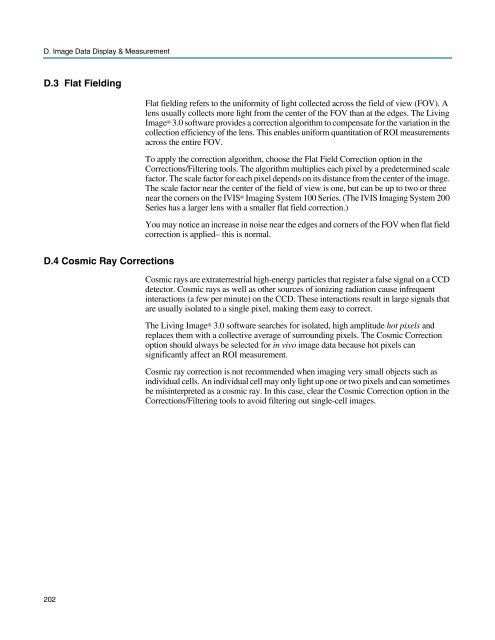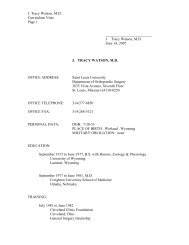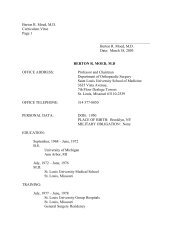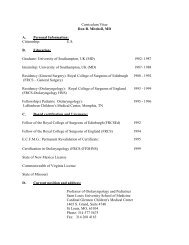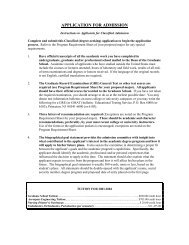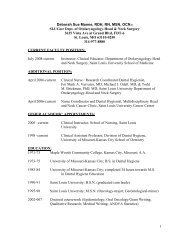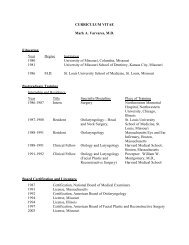Living Image 3.1
Living Image 3.1
Living Image 3.1
You also want an ePaper? Increase the reach of your titles
YUMPU automatically turns print PDFs into web optimized ePapers that Google loves.
D. <strong>Image</strong> Data Display & Measurement<br />
D.3 Flat Fielding<br />
D.4 Cosmic Ray Corrections<br />
202<br />
Flat fielding refers to the uniformity of light collected across the field of view (FOV). A<br />
lens usually collects more light from the center of the FOV than at the edges. The <strong>Living</strong><br />
<strong>Image</strong> ® 3.0 software provides a correction algorithm to compensate for the variation in the<br />
collection efficiency of the lens. This enables uniform quantitation of ROI measurements<br />
across the entire FOV.<br />
To apply the correction algorithm, choose the Flat Field Correction option in the<br />
Corrections/Filtering tools. The algorithm multiplies each pixel by a predetermined scale<br />
factor. The scale factor for each pixel depends on its distance from the center of the image.<br />
The scale factor near the center of the field of view is one, but can be up to two or three<br />
near the corners on the IVIS ® Imaging System 100 Series. (The IVIS Imaging System 200<br />
Series has a larger lens with a smaller flat field correction.)<br />
You may notice an increase in noise near the edges and corners of the FOV when flat field<br />
correction is applied– this is normal.<br />
Cosmic rays are extraterrestrial high-energy particles that register a false signal on a CCD<br />
detector. Cosmic rays as well as other sources of ionizing radiation cause infrequent<br />
interactions (a few per minute) on the CCD. These interactions result in large signals that<br />
are usually isolated to a single pixel, making them easy to correct.<br />
The <strong>Living</strong> <strong>Image</strong> ® 3.0 software searches for isolated, high amplitude hot pixels and<br />
replaces them with a collective average of surrounding pixels. The Cosmic Correction<br />
option should always be selected for in vivo image data because hot pixels can<br />
significantly affect an ROI measurement.<br />
Cosmic ray correction is not recommended when imaging very small objects such as<br />
individual cells. An individual cell may only light up one or two pixels and can sometimes<br />
be misinterpreted as a cosmic ray. In this case, clear the Cosmic Correction option in the<br />
Corrections/Filtering tools to avoid filtering out single-cell images.


